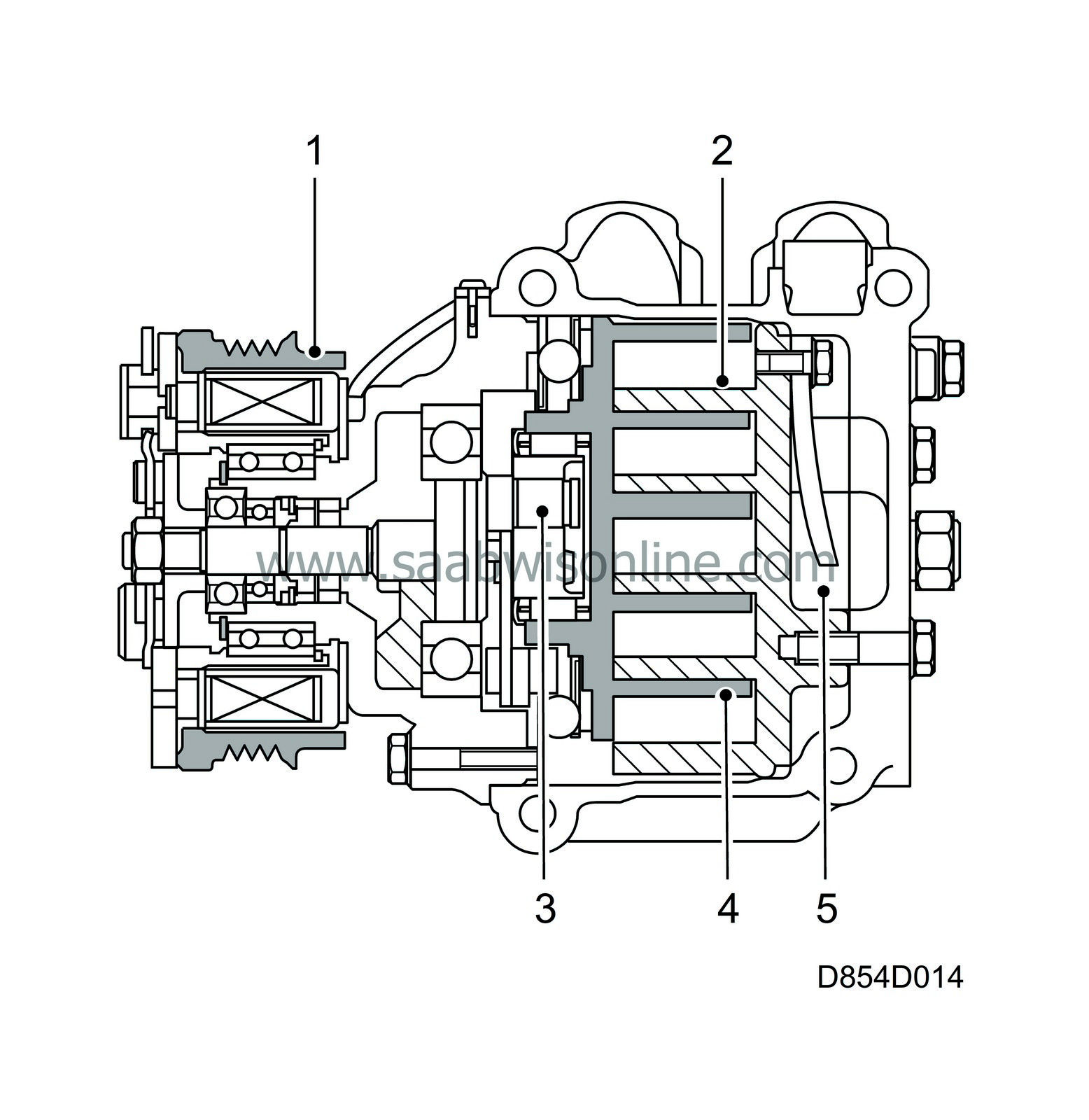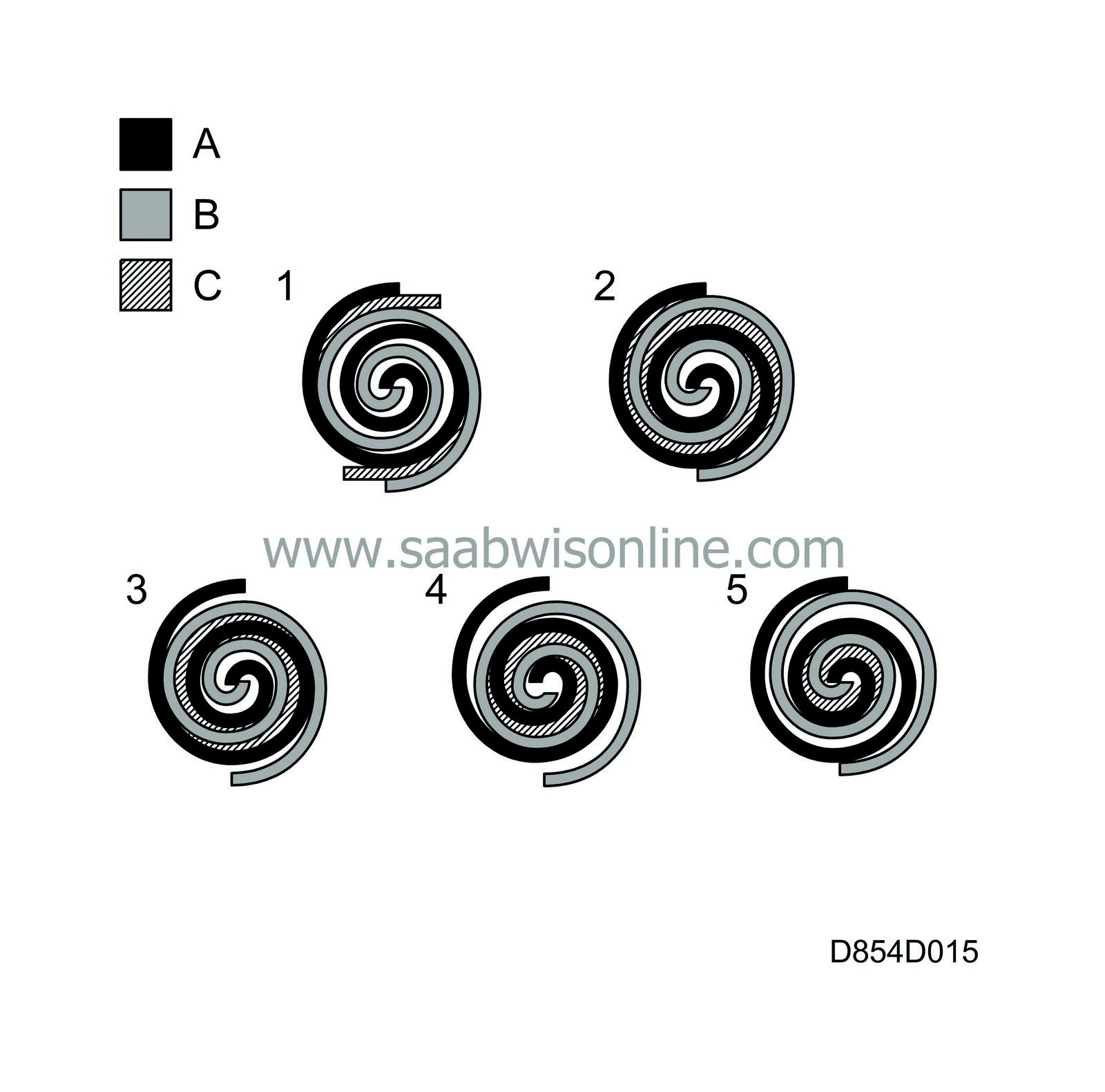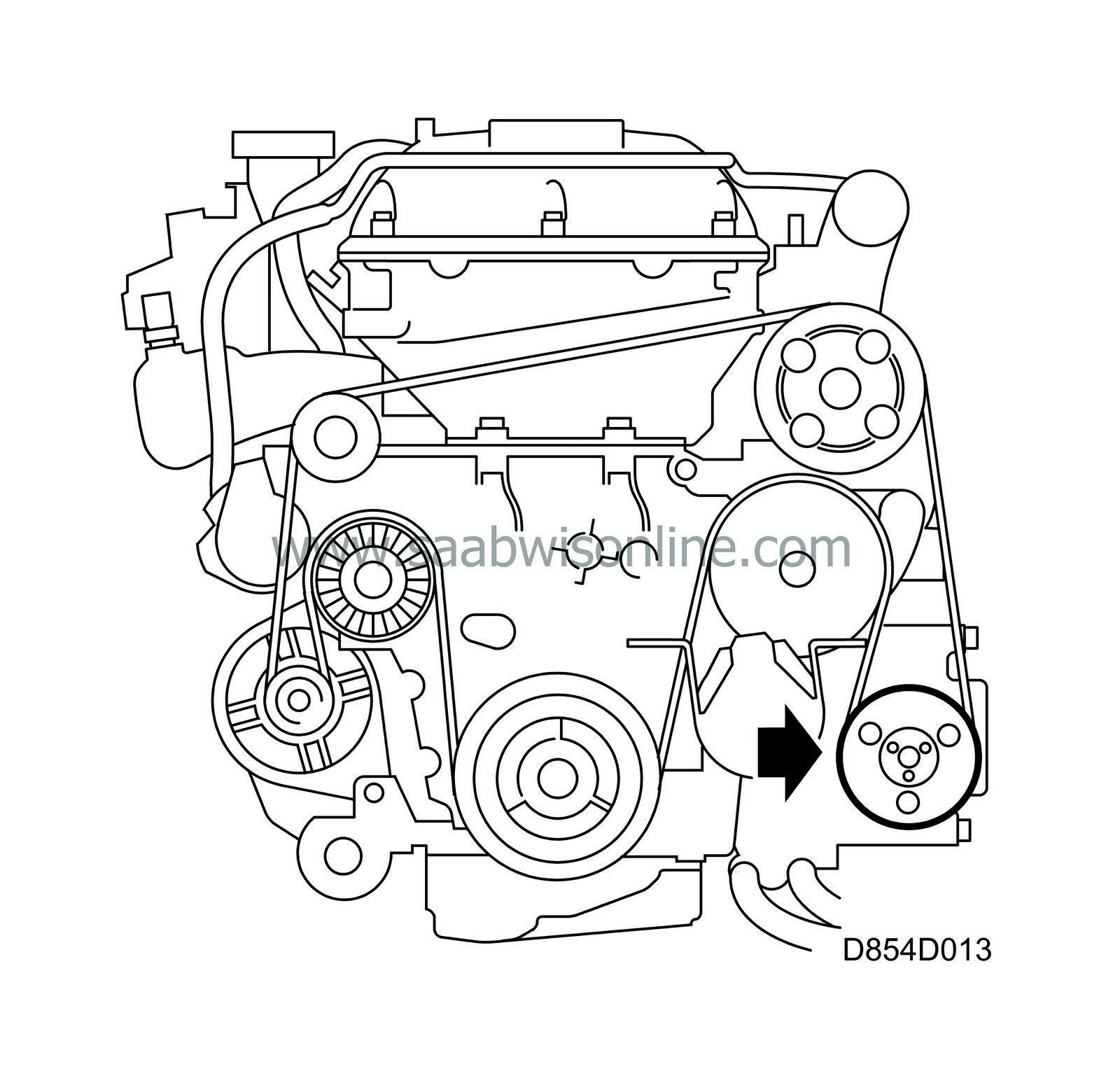PRE-RELEASE
Compressor (petroleum)
| Compressor (petroleum) |
A lot of power is required to achieve this pressure increase. The compressor takes this power from the crankshaft via a belt system which also drives the generator and power steering pump.
Cut-in and cut-out is accomplished through an electromagnetically controlled mechanical clutch that is integrated with the compressor belt pulley. There is an overheating protection on the compressor that will cut-out if the temperature exceeds +120°C. The compressor will cut-in again when the temperature has dropped below +105°C. Corresponding actual temperature of the compressor is then 140-150°C at cut-out and 115-125°C when it cuts in.
If the compressor is overheated, for example, if the amount of refrigerant in the A/C system is insufficient or if the expansion valve is clogged, it will cycle (cut-in and out repeatedly) until the temperature decreases.
The compressor is equipped with a non-return valve located in the outlet on the high-pressure side. The non-return valve prevents refrigerant from flowing back to low-pressure side during the normal operation of the compressor but also when it has stopped.

1 Clutch
2 Stationary coil
3 Crankshaft mechanism
4 Mobile coil
5 Outlet
The compressor is of the scroll type. The scroll compressor provides a continual flow up to high speeds at the same time as the cut-in torque is low. The compressor has few moving parts.
Under the compressor, there is a stationary coil while the other coil moves in a pattern created by the crankshaft mechanism in the pump. Neither coil rotates. During movement , the gas spaces are pressed towards the centre between the two coils at the same time as the volume decreases. When the gas space reaches the centre, it is under high pressure and is directed through an outlet. Several gas spaces are compressed during compression and this results in smooth operation.

| A. |
Stationary spiral
|
|
| B. |
Moving spiral
|
|
| C. |
Refrigerant
|
|
Pump function
| 1. |
The compression in the scroll is created by the interaction of a stationary coil and a coil moving in a pattern.
|
|
| 2. |
The open outlet is sealed when the refrigerant is pulled into the coil.
|
|
| 3. |
When the coil continues moving, the refrigerant is compressed in ever smaller gas spaces.
|
|
| 4. |
When the refrigerant reaches the central outlet, the desired pressure has been achieved.
|
|
| 5. |
During operation, all gas spaces are in various states of compression which results in an almost continuous inlet and outlet.
|
|



